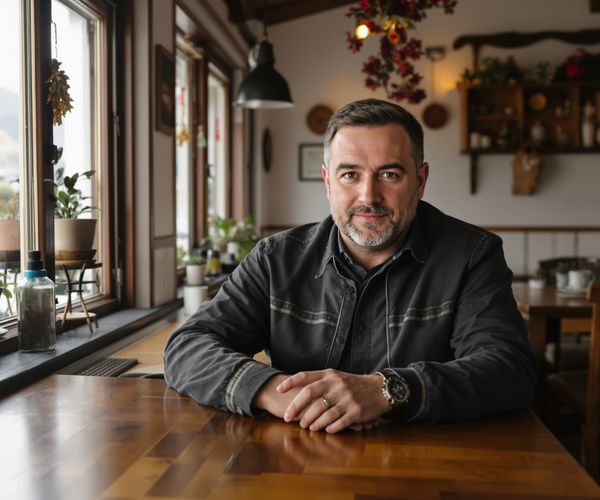
Bohinj: The Jewel of the Julian Alps
Discover the serene beauty and adventurous spirit of Bohinj, Slovenia's hidden gem in the Julian Alps, offering pristine nature, rich cultural heritage, and year-round outdoor activities.
Nestled in the heart of the Julian Alps, Bohinj is a hidden gem in Slovenia that offers breathtaking natural beauty and a peaceful atmosphere. This stunning region is part of Triglav National Park, the only national park in Slovenia, and is home to Lake Bohinj, the largest permanent lake in the country. Surrounded by majestic mountains and dense forests, Bohinj is a paradise for nature lovers and adventure seekers alike. One of the highlights of Bohinj is Lake Bohinj itself, a crystal-clear glacial lake that reflects the surrounding peaks like a mirror. Visitors can enjoy a variety of activities on the lake, including swimming, kayaking, and paddleboarding in the summer, or ice-skating and ice-climbing in the winter. The area around the lake is crisscrossed with numerous hiking and biking trails, making it an ideal destination for outdoor enthusiasts. Aside from its natural wonders, Bohinj boasts a rich cultural heritage. The region is dotted with charming villages, each with its own unique character and history. The Church of St. John the Baptist, located near the lake, is a must-see with its beautiful frescoes and medieval architecture. In addition, the Bohinj International Wild Flower Festival, held every spring, celebrates the region's diverse flora with guided tours, workshops, and exhibitions. Whether you're looking for adventure, relaxation, or a bit of both, Bohinj offers something for everyone. The serene landscape, combined with the warm hospitality of the locals, makes this a destination that will leave a lasting impression on any visitor.
Local tips in Bohinj
- Visit Lake Bohinj early in the morning for the best light and fewer crowds.
- Try local dishes like Bohinjska postrv (trout) and traditional cheese at local restaurants and farms.
- Bring comfortable hiking shoes; the area is filled with trails of varying difficulty levels.
- Check out the Vogel Ski Resort for winter sports or take a cable car ride for stunning panoramic views.
- Attend the Bohinj International Wild Flower Festival in spring to explore the region's unique flora.
Bohinj: The Jewel of the Julian Alps
Nestled in the heart of the Julian Alps, Bohinj is a hidden gem in Slovenia that offers breathtaking natural beauty and a peaceful atmosphere. This stunning region is part of Triglav National Park, the only national park in Slovenia, and is home to Lake Bohinj, the largest permanent lake in the country. Surrounded by majestic mountains and dense forests, Bohinj is a paradise for nature lovers and adventure seekers alike. One of the highlights of Bohinj is Lake Bohinj itself, a crystal-clear glacial lake that reflects the surrounding peaks like a mirror. Visitors can enjoy a variety of activities on the lake, including swimming, kayaking, and paddleboarding in the summer, or ice-skating and ice-climbing in the winter. The area around the lake is crisscrossed with numerous hiking and biking trails, making it an ideal destination for outdoor enthusiasts. Aside from its natural wonders, Bohinj boasts a rich cultural heritage. The region is dotted with charming villages, each with its own unique character and history. The Church of St. John the Baptist, located near the lake, is a must-see with its beautiful frescoes and medieval architecture. In addition, the Bohinj International Wild Flower Festival, held every spring, celebrates the region's diverse flora with guided tours, workshops, and exhibitions. Whether you're looking for adventure, relaxation, or a bit of both, Bohinj offers something for everyone. The serene landscape, combined with the warm hospitality of the locals, makes this a destination that will leave a lasting impression on any visitor.
When is the best time to go to Bohinj?
Iconic landmarks you can’t miss
Soteska Vintgar
Explore the mesmerizing Soteska Vintgar gorge in Slovenia, where nature's beauty and adventure await in a stunning natural preserve.
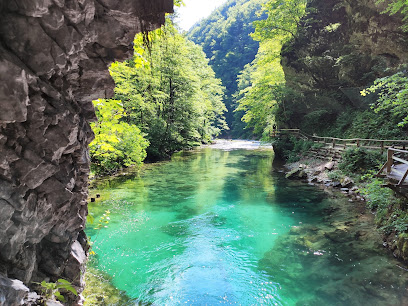
Lake Bohinj
Explore the breathtaking landscapes and rich cultural heritage at Lake Bohinj, Slovenia's serene glacial paradise.

Valley station - Vogel Cable Car
Experience Slovenia's breathtaking Julian Alps from the Vogel Cable Car, a gateway to adventure, stunning views, and outdoor activities all year round.
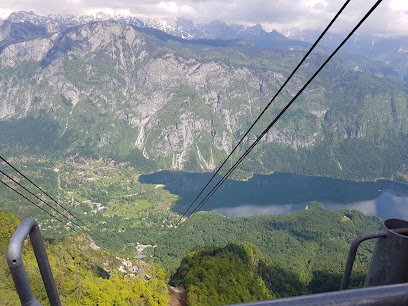
Mala Osojnica
Discover the breathtaking vistas at Mala Osojnica, a must-visit scenic spot in Bled, Slovenia, offering stunning views of Lake Bled and the Julian Alps.
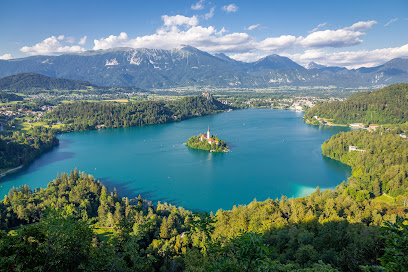
Savica Waterfall
Experience the breathtaking beauty of Savica Waterfall, a natural wonder in Slovenia's Triglav National Park that captivates every visitor.
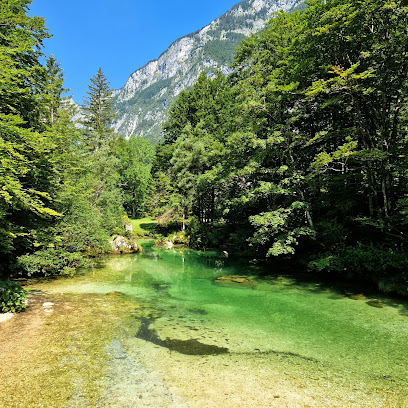
Bohinj ECO Hotel & Wellness
Discover the perfect blend of luxury and adventure at Bohinj ECO Hotel & Wellness in Slovenia’s stunning Bohinj Valley.

Goldenhorn/Zlatorog
Experience the breathtaking views of Goldenhorn at Lake Bohinj, a must-visit vista point for nature lovers and photographers in Slovenia.
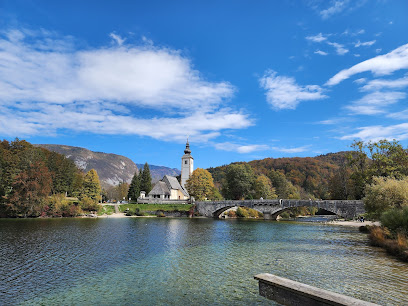
Mostnica Gorge
Explore the stunning natural beauty of Mostnica Gorge, a serene preserve in Stara Fužina, Slovenia, perfect for hiking and nature photography.
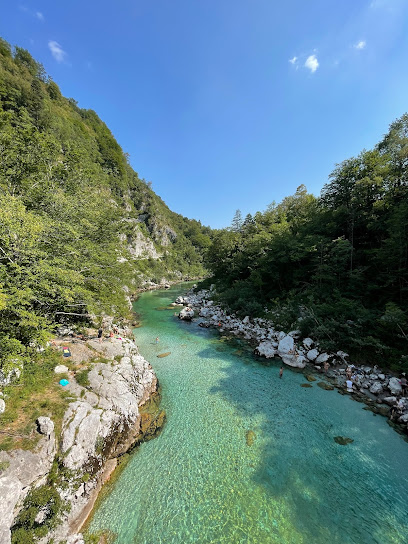
Pod Skalco - Ribčev Laz
Discover the charm of Pod Skalco in Ribčev Laz, where exquisite Slovenian cuisine meets breathtaking alpine views for an unforgettable experience.
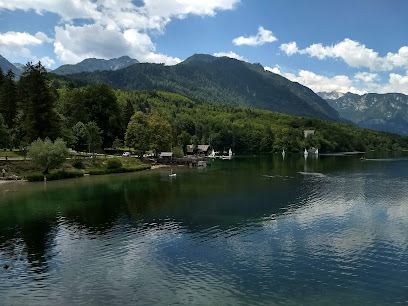
Hostel Pod Voglom & Pac Sports outdoor agency
Discover the ultimate adventure hub at Hostel Pod Voglom, where outdoor activities and comfort blend seamlessly amidst Slovenia's stunning landscapes.

Kosijev dom na Vogarju (1054 m)
Discover the serene beauty of Kosijev Dom na Vogarju, a mountain cabin offering stunning views and a taste of authentic Slovenian cuisine.
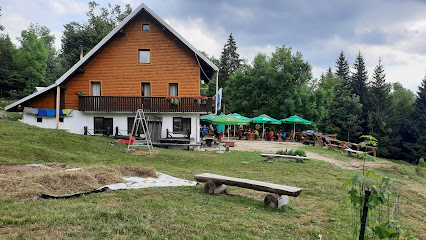
Vogel Ski Resort
Experience the breathtaking beauty and exhilarating slopes of Vogel Ski Resort, Slovenia's premier destination for winter sports enthusiasts and nature lovers.
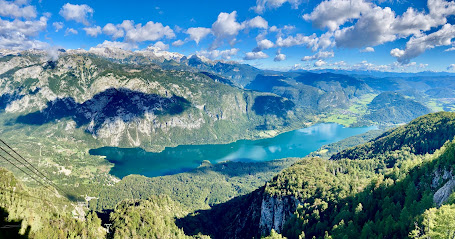
Hotel Bohinj
Experience the tranquility of nature at Hotel Bohinj, your gateway to the stunning landscapes of Lake Bohinj and the Julian Alps.
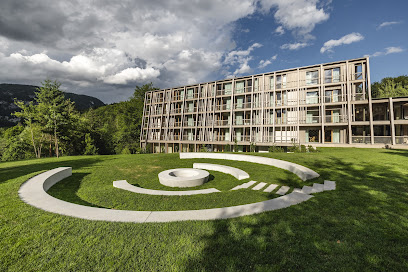
Boutique Hotel Majerca
Discover the charm of Boutique Hotel Majerca in Bohinjsko jezero, where comfort meets nature and adventure awaits around every corner.
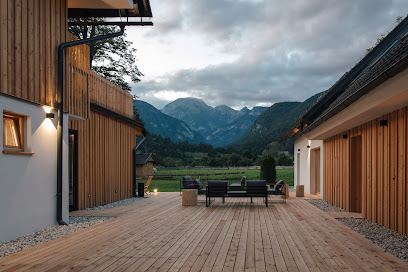
Seven Lakes Valley
Explore the breathtaking Seven Lakes Valley, a national reserve in Slovenia, offering stunning alpine scenery, diverse wildlife, and unforgettable outdoor adventures.
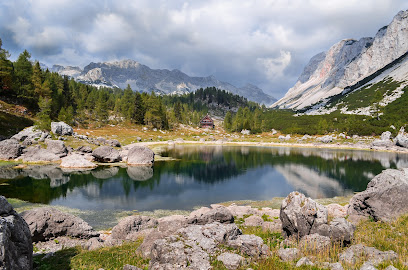
Unmissable attractions to see
Ljubljana Castle
Experience the rich history and stunning views at Ljubljana Castle, a captivating landmark in Slovenia's beautiful capital city.
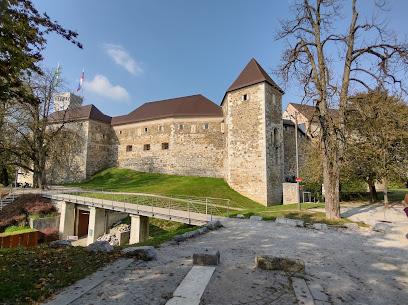
Bled Castle
Explore the rich history and breathtaking views of Bled Castle, a captivating medieval fortress overlooking the stunning Lake Bled.

Dragon Bridge
Explore the iconic Dragon Bridge in Ljubljana, a stunning example of Art Nouveau architecture and a symbol of the city's rich cultural heritage.

Soteska Vintgar
Explore the stunning Soteska Vintgar gorge in Slovenia, where nature's beauty meets adventure in a breathtaking landscape.
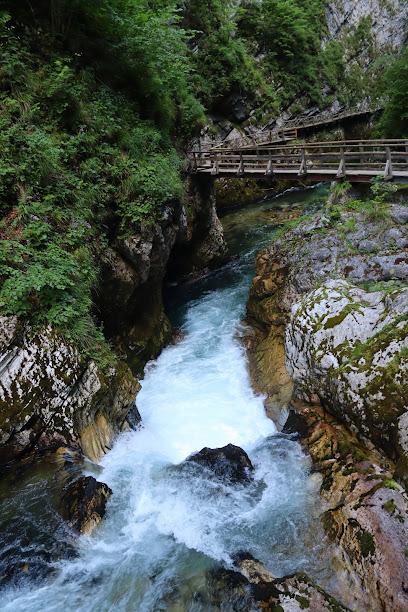
Prešeren Square
Experience the vibrant culture and stunning architecture of Prešeren Square in Ljubljana, Slovenia's enchanting capital city.
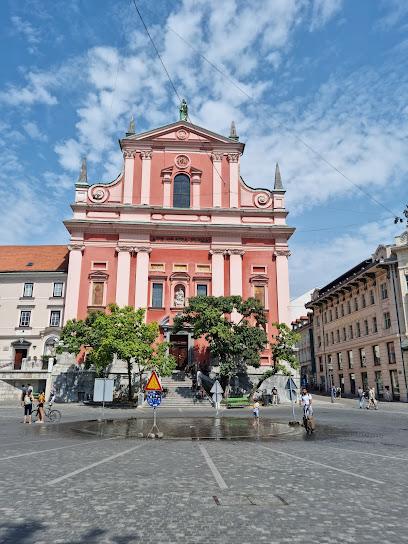
Kongresni Trg
Discover the vibrant Kongresni Trg in Ljubljana, a cultural hub with stunning architecture and lush gardens perfect for relaxation and exploration.
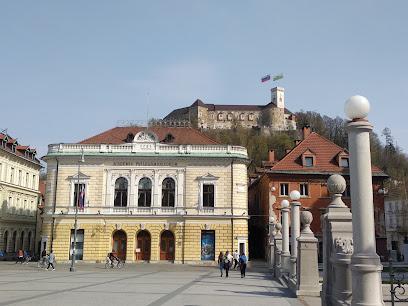
Lake Bled
Experience the stunning landscapes and rich culture of Lake Bled, Slovenia's enchanting gem nestled in the Julian Alps.

Devil's Bridge
Explore the legendary Devil's Bridge in Cividale del Friuli, a stunning medieval structure surrounded by captivating landscapes and rich folklore.
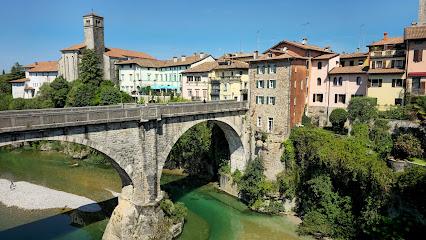
Planica Nordic Centre
Explore the exhilarating world of winter sports at Planica Nordic Centre, a stunning destination in Slovenia's Julian Alps.
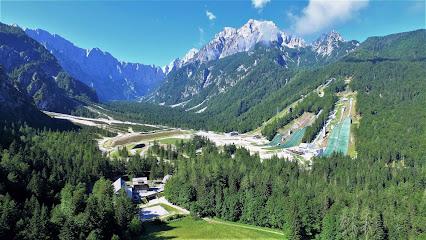
AKC Metelkova mesto
Explore the artistic heart of Ljubljana at AKC Metelkova Mesto, a vibrant cultural hub filled with art, music, and unforgettable experiences.
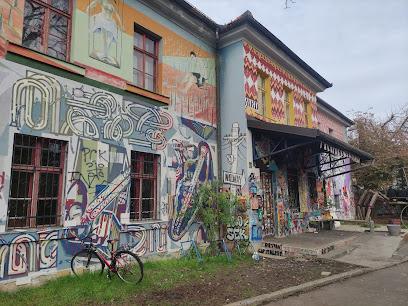
Waterfall Peričnik
Experience the breathtaking beauty of Waterfall Peričnik, a must-visit natural attraction in Slovenia's Julian Alps, showcasing stunning views and serene landscapes.
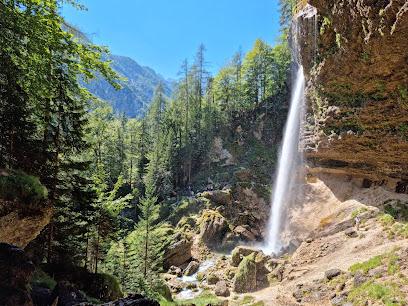
Vogel ski center
Discover the breathtaking Vogel Ski Center in Slovenia, a top choice for skiing, stunning views, and unforgettable winter experiences in the Julian Alps.
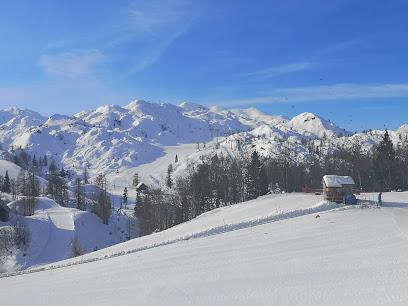
House of illusions
Discover the magic of perception at the House of Illusions, a top tourist attraction in Ljubljana that delights visitors with stunning visual tricks and interactive fun.

Zelenci Nature Reserve
Explore the stunning Zelenci Nature Reserve, a true nature lover's paradise with emerald springs and breathtaking landscapes in Kranjska Gora, Slovenia.
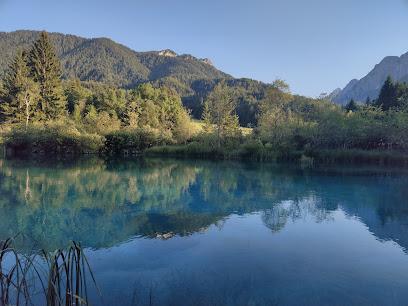
Waterfall Kozjak
Experience the breathtaking beauty of Kozjak Waterfall, a hidden gem in Slovenia's Soča Valley, perfect for nature lovers and adventure seekers.
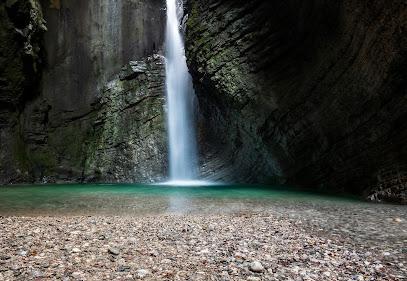
Essential places to dine
Hiša Pr' Pristavc - gostilna in pizzerija
Discover the taste of Slovenia at Hiša Pr' Pristavc - where authentic flavors meet warm hospitality in scenic Bohinjska Bistrica.

Foksner
Discover gourmet burgers in the scenic setting of Bohinj Lake at Foksner, where taste meets tranquility in every bite.
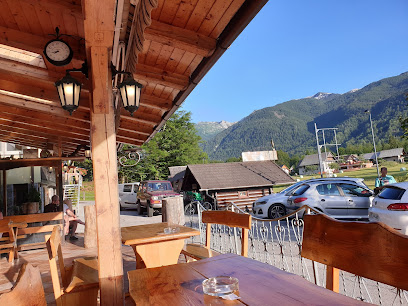
Gostilnica Štrudl
Savor authentic Slovenian flavors at Gostilnica Štrudl in Bohinjska Bistrica—where culinary tradition meets local charm.
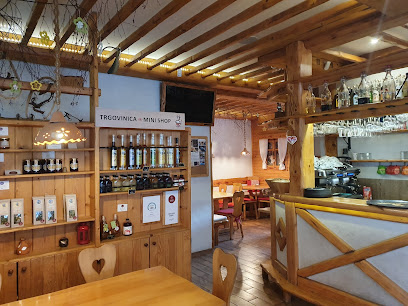
Gostilna Ema
Experience authentic Slovenian cuisine at Gostilna Ema, where delicious pizzas meet breathtaking mountain views in Srednja Vas v Bohinju.
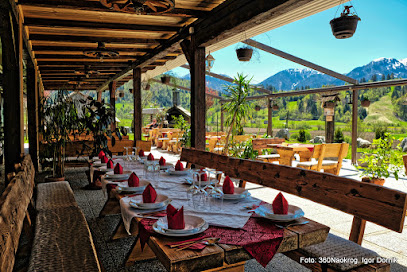
Bohinj ECO Hotel & Wellness
Discover luxury amidst nature at Bohinj ECO Hotel & Wellness – your perfect Slovenian retreat with adventure and relaxation.

Gostilna pri Hrvatu, Branko Slamar s.p.
Experience authentic Slovenian cuisine at Gostilna pri Hrvatu in Srednja Vas v Bohinju – where tradition meets taste.
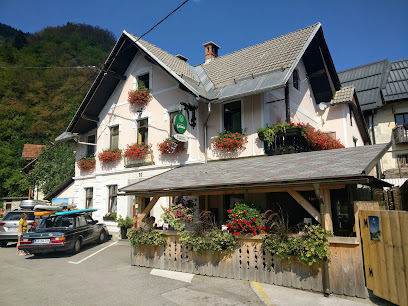
Pod Skalco - Ribčev Laz
Discover the flavors of Slovenia at Pod Skalco in Ribčev Laz – where culinary excellence meets breathtaking lake views.
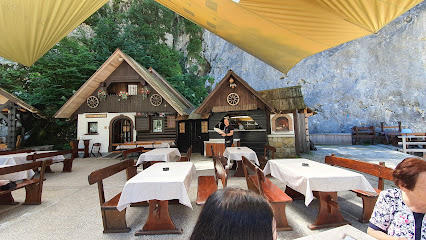
Gostilna Batišt Tomaž Zupan s.p.
Experience authentic Slovenian cuisine amidst breathtaking natural beauty at Gostilna Batišt Tomaž Zupan.
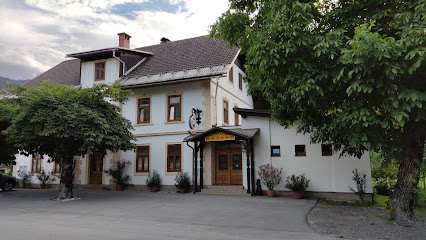
Gostilna in Picerija Pr' Mihovc Bohinj
Experience authentic Slovenian cuisine and delicious pizzas at Gostilna in Picerija Pr' Mihovc Bohinj amidst stunning natural beauty.

Hotel Tripič
Discover the flavors of Slovenia at Hotel Tripič – where exceptional cuisine meets warm hospitality in Bohinjska Bistrica.
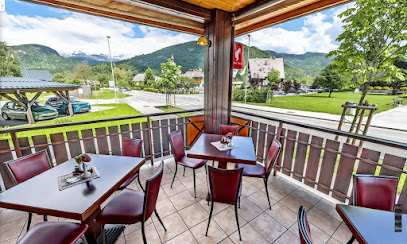
Restavracija Kramar
Discover authentic Slovenian flavors at Restavracija Kramar in Stara Fužina, near Bohinj Lake – a must-visit culinary gem for travelers.
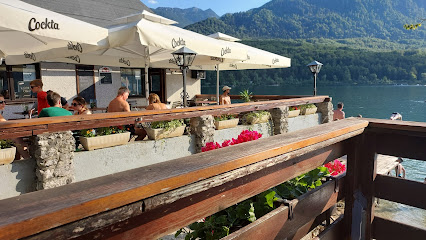
Restavracija in picerija Tripič
Discover delicious Italian cuisine at Restavracija in Picerija Tripič, where authentic pizza meets stunning Slovenian landscapes.

Apartments - restaurant Ukanc
Experience exquisite dining and cozy accommodations amidst the stunning landscapes of Bohinjsko jezero at Apartments - Restaurant Ukanc.
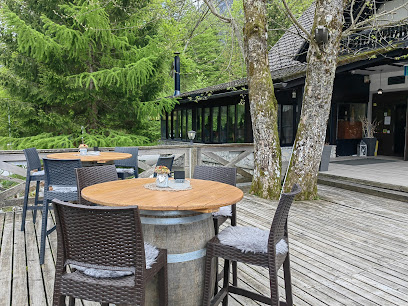
Gostilna Rupa
Experience authentic Slovenian cuisine in a family-friendly setting at Gostilna Rupa in Bohinj - where delicious food meets stunning nature.
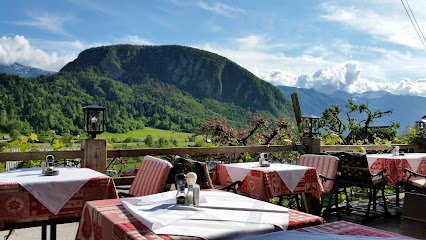
Danica Guesthouse
Discover authentic Slovenian cuisine and warm hospitality at Danica Guesthouse in Bohinjska Bistrica.
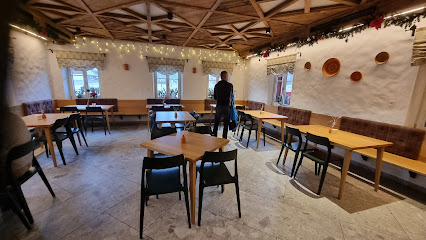
Markets, malls and hidden boutiques
SPAR Partner
Discover SPAR Partner in Bohinjska Bistrica for a delightful mix of local and international groceries, perfect for fueling your Slovenian adventures.
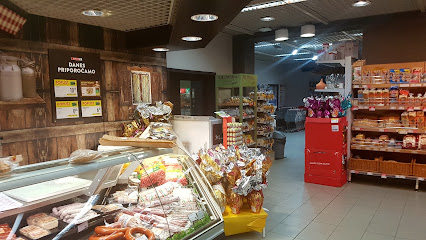
Kava Bar Pri Cukiniju, Zurap Šabani s.p.
Discover the sweet side of Bohinjska Bistrica at Kava Bar Pri Cukiniju, where artisanal ice creams and delightful desserts await your taste buds.
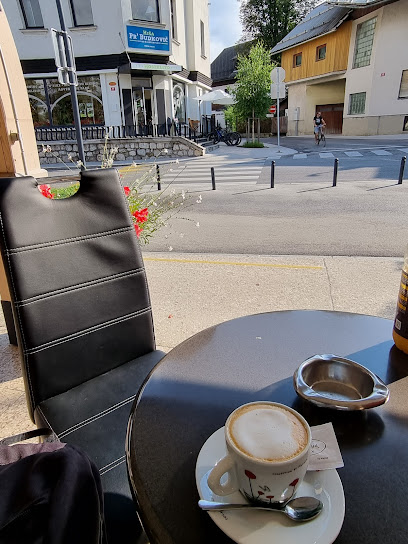
Pekarna Planika
Discover the taste of Slovenia at Pekarna Planika, where traditional baking meets local flavor in Bohinjska Bistrica.
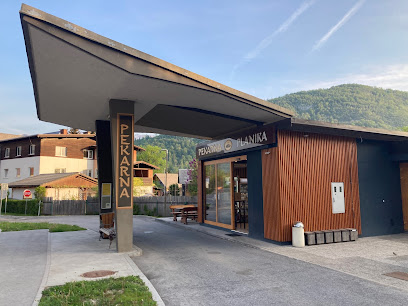
Flyfisher's-Friend
Discover Flyfisher's-Friend in Bohinjska Bistrica: Your go-to fishing store and bicycle rental for unforgettable outdoor experiences in Slovenia.
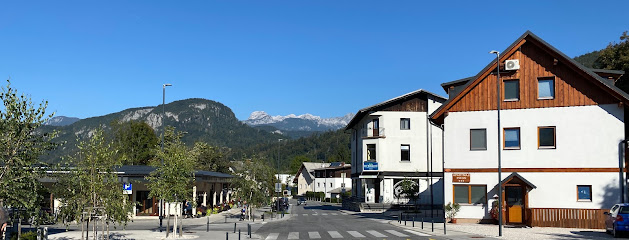
Mercator store
Explore Bohinj's Mercator Store for fresh produce, local delicacies, and all your grocery needs while enjoying the stunning Slovenian landscape.
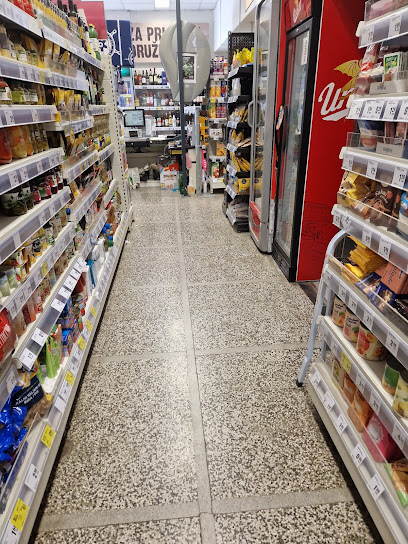
Alpinsport, agencija in trgovina, Bohinjsko Jezero, d.o.o.
Discover outdoor adventures at Alpinsport, your one-stop rental shop for canoes, kayaks, bikes, and skis in Bohinjsko Jezero, Slovenia.
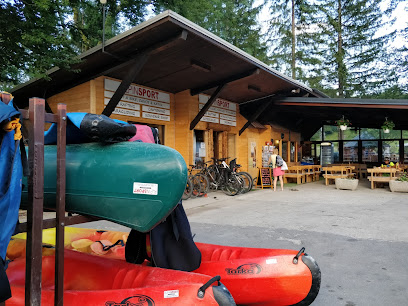
Sirarna Pr'Prangarčk
Discover the rich flavors of Slovenia at Sirarna Pr'Prangarčk, a charming cheese shop in Bohinjska Bistrica, renowned for its artisanal cheeses and warm hospitality.
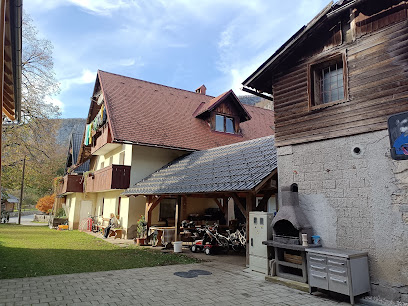
Mercator
Experience the charm of Mercator in Srednja Vas v Bohinju, your go-to destination for local products, groceries, and souvenirs.
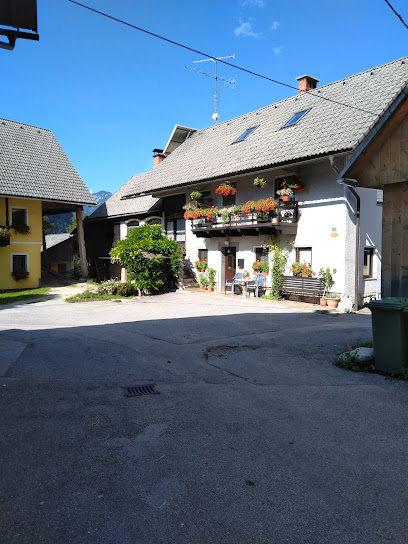
LIP opažne plošče Bohinj, d.o.o.
Explore the beauty of Bohinj through quality timber products at Lip opažne plošče Bohinj, a local gem for woodworking enthusiasts.
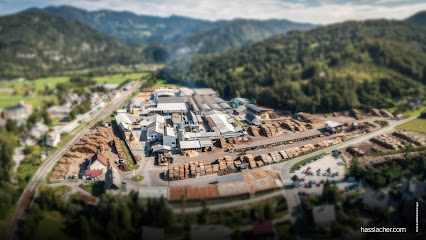
Intersport Bohinjska Bistrica
Discover high-quality sports gear and stylish apparel at Intersport Bohinjska Bistrica, your one-stop shop for outdoor adventures in Slovenia.
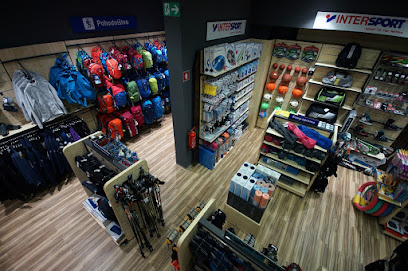
BOHINJSKA Flyer - zip line
Soar through Slovenia's breathtaking landscapes at Bohinjska Flyer, the ultimate zip line adventure in Bohinjska Bistrica.

MICA pet shop
Discover MICA Pet Shop, your go-to destination for premium pet supplies amidst the breathtaking scenery of Bohinj, Slovenia.
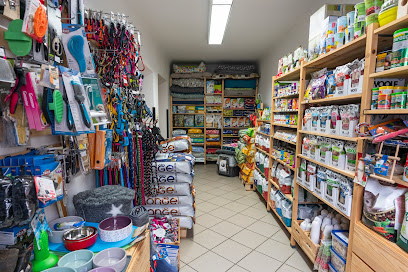
Gorenjske lekarne
Explore Bohinjska Bistrica with confidence at Gorenjske Lekarne, your trusted source for health and wellness essentials in the heart of Slovenia.
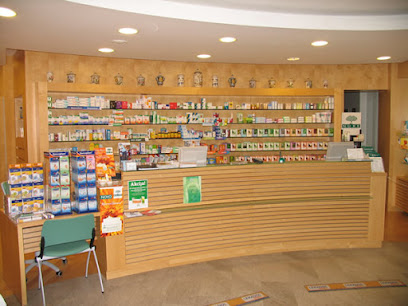
Trgovina Krpan
Discover Trgovina Krpan, your friendly convenience store in Stara Fužina, offering local treats and essentials for an unforgettable Slovenian adventure.
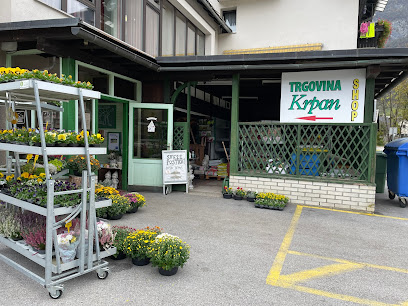
Etno galerija, Mojca Luzar s.p.
Discover authentic Slovenian souvenirs at Etno Galerija in Bohinjska Bistrica, where local craftsmanship meets rich cultural heritage.

Essential bars & hidden hideouts
Hiša Pr' Pristavc - gostilna in pizzerija
Discover the charm of Hiša Pr' Pristavc in Bohinjska Bistrica, where authentic Slovenian cuisine meets stunning natural beauty.

Foksner
Discover Foksner in Bohinjsko Jezero, where gourmet hamburgers meet stunning natural beauty in a charming dining experience.
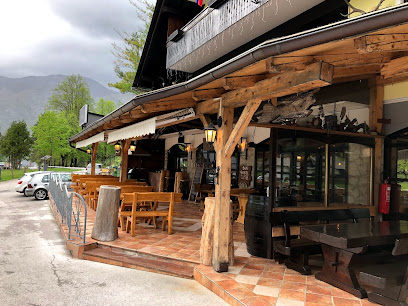
Gostilnica Štrudl
Experience the authentic flavors of Slovenia at Gostilnica Štrudl in Bohinjska Bistrica, where local ingredients meet warm hospitality.

Gostilna pri Hrvatu, Branko Slamar s.p.
Experience authentic Slovenian cuisine in the heart of Bohinj at Gostilna pri Hrvatu, where local ingredients and warm hospitality meet.
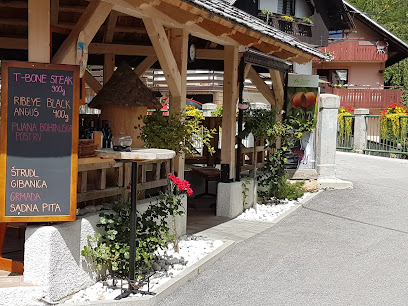
Pod Skalco - Ribčev Laz
Experience the enchanting flavors and stunning views at Pod Skalco - Ribčev Laz, a must-visit bar and restaurant in Bohinj, Slovenia.

Gostilna in Picerija Pr' Mihovc Bohinj
Experience authentic Slovenian cuisine and delicious pizza at Gostilna Pr' Mihovc, a charming restaurant in the heart of Bohinj.
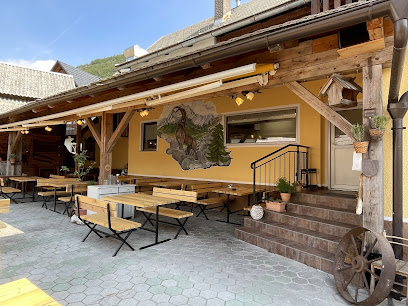
Restavracija Kramar
Discover the flavors of Slovenia at Restavracija Kramar, a cozy restaurant in Bohinj offering traditional dishes made with fresh, local ingredients.
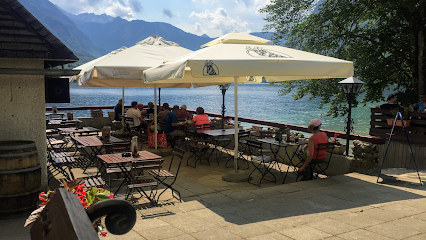
Restaurant Triglav Bohinj
Experience authentic Slovenian cuisine amidst breathtaking views at Restaurant Triglav Bohinj.
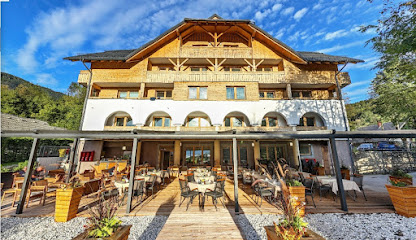
Karakter Bar
Discover the vibrant atmosphere of Karakter Bar, a live music hotspot in Bohinj, Slovenia, offering delightful drinks and unforgettable performances.
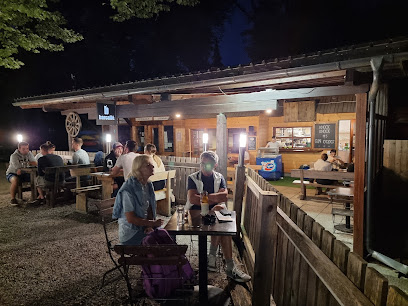
'Stacjon' Bar - Trainstation Bar&Snack
Experience delicious hamburgers and local charm at 'Stacjon' Bar - the perfect stop for travelers in Bohinjska Bistrica.
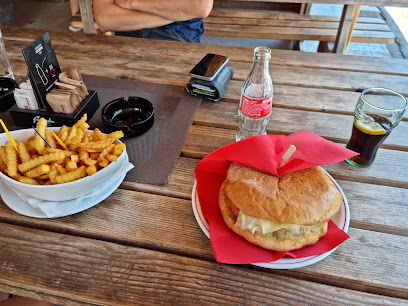
Snack bar - Pod Brezo
Discover the cozy Snack Bar - Pod Brezo, where delightful snacks and stunning views meet in the heart of Bohinj, Slovenia.
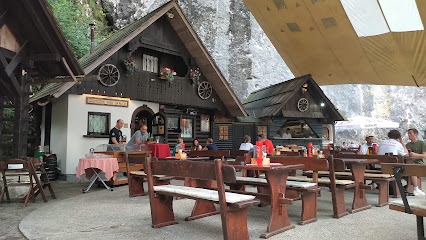
Rock bar Urška
Discover the lively atmosphere of Rock Bar Urška in Bohinjska Bistrica, where locals and tourists enjoy great drinks and live music in a cozy setting.
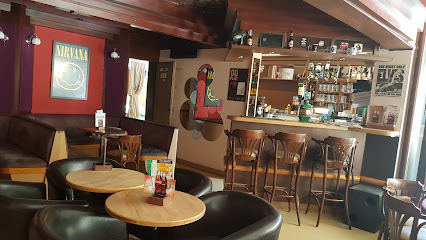
Restaurant Bohinj Sunrose 7
Discover the flavors of Slovenia at Restaurant Bohinj Sunrose 7, where local ingredients meet breathtaking views in a cozy atmosphere.
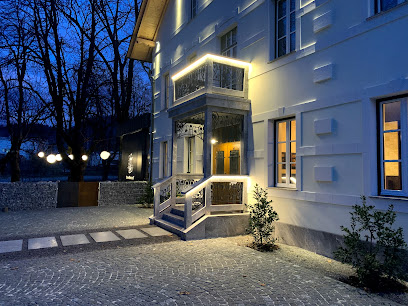
Slaščičarna bar kobla
Discover the sweet delights of Slaščičarna Bar Kobla in Bohinjska Bistrica, where every dessert is a taste of local tradition and flavor.
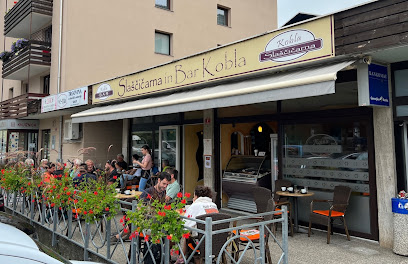
Kava Bar Rondo
Discover the cozy charm of Kava Bar Rondo in Bohinjska Bistrica, Slovenia, where delightful beverages and a warm ambiance await.
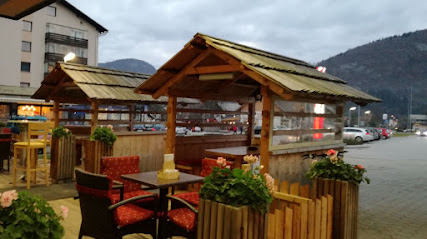
Travel experiences inspired by this city
Explore more travel diariesLocal Phrases
-
- HelloZdravo
[Z-dra-vo] - GoodbyeNasvidenje
[Na-svee-den-ye] - YesDa
[Da] - NoNe
[Ne] - Please/You're welcomeProsim
[Pro-seem] - Thank youHvala
[Hva-la] - Excuse me/SorryOprosti
[O-pro-stee] - How are you?Kako si?
[Ka-ko see] - Fine. And you?V redu. In ti?
[V re-du. Een tee] - Do you speak English?Ali govorite angleško?
[A-lee go-vo-ree-te an-gle-shko] - I don't understandNe razumem
[Ne ra-zoo-mem]
- HelloZdravo
-
- I'd like to see the menu, pleaseŽelel bi videti jedilnik, prosim
[Zhe-lel bee vee-de-tee ye-deel-neek, pro-seem] - I don't eat meatNe jem mesa
[Ne yem me-sa] - Cheers!Na zdravje!
[Na zdra-vye] - I would like to pay, pleaseŽelel bi plačati, prosim
[Zhe-lel bee pla-cha-tee, pro-seem]
- I'd like to see the menu, pleaseŽelel bi videti jedilnik, prosim
-
- Help!Pomoč!
[Po-moch] - Go away!Pojdi stran!
[Poy-dee stran] - Call the Police!Pokliči policijo!
[Pok-lee-chee po-lee-see-yo] - Call a doctor!Pokliči zdravnika!
[Pok-lee-chee zdra-vnee-ka] - I'm lostIzgubil sem se
[Iz-goo-beel sem se] - I'm illBoln sem
[Boln sem]
- Help!Pomoč!
-
- I'd like to buy...Želel bi kupiti...
[Zhe-lel bee koo-pee-tee] - I'm just lookingSamo gledam
[Sa-mo gle-dam] - How much is it?Koliko stane?
[Ko-lee-ko sta-ne] - That's too expensiveTo je predrago
[To ye pre-da-go] - Can you lower the price?Lahko znižate ceno?
[La-hko znee-zha-te tse-no]
- I'd like to buy...Želel bi kupiti...
-
- What time is it?Koliko je ura?
[Ko-lee-ko ye oo-ra] - It's one o'clockJe ena ura
[Ye e-na oo-ra] - Half past (10)Pol desetih
[Pol de-se-teeh] - MorningJutro
[Yoo-tro] - AfternoonPopoldne
[Po-pol-dne] - EveningVečer
[Vee-cher] - YesterdayVčeraj
[Vche-rai] - TodayDanes
[Da-nes] - TomorrowJutri
[Yoo-tree] - 1Ena
[E-na] - 2Dva
[Dva] - 3Tri
[Tree] - 4Štiri
[Shtee-ree] - 5Pet
[Pet] - 6Šest
[Shest] - 7Sedem
[Se-dem] - 8Osem
[O-sem] - 9Devet
[De-vet] - 10Deset
[De-set]
- What time is it?Koliko je ura?
-
- Where's a/the...?Kje je...
[Kye ye] - What's the address?Kakšen je naslov?
[Kak-shen ye na-slov] - Can you show me (on the map)?Mi lahko pokažete (na zemljevidu)?
[Mee la-hko po-ka-zhe-te (na zem-lje-vee-doo)] - When's the next (bus)?Kdaj je naslednji (avtobus)?
[Kdai ye na-sled-nee (av-to-boos)] - A ticket (to ....)Ena vozovnica (za ...)
[E-na vo-zov-nee-tsa (za)]
- Where's a/the...?Kje je...
History of Bohinj
-
The history of Bohinj dates back to prehistoric times, with archaeological evidence suggesting that the region was inhabited by Illyrian and Celtic tribes. During the Roman era, Bohinj became part of the Roman province of Pannonia. The Romans built roads and fortifications in the area, some remnants of which can still be found today. This era marked the beginning of more structured settlements and trade in the Bohinj Valley.
-
In the medieval period, Bohinj saw the establishment of several small villages, many of which still exist today. The region was under the rule of various feudal lords, and agriculture became the mainstay of the local economy. The first written records of Bohinj date back to this time, with mentions in documents from the 13th century. The Church of St. John the Baptist, located at the end of Lake Bohinj, is one of the iconic medieval structures that symbolize this era.
-
In the 18th and 19th centuries, Bohinj became known for its ironworks. The region's rich natural resources, including forests and iron ore, fueled the growth of this industry. The Bohinj Ironworks were among the most advanced in the Habsburg Monarchy, producing high-quality iron that was used across Europe. The remnants of these ironworks can still be explored today, providing a glimpse into Bohinj's industrial past.
-
During World War I, Bohinj found itself on the fringes of the front lines of the Battle of the Isonzo. This series of battles between the Austro-Hungarian Empire and the Kingdom of Italy left a significant impact on the region. The military cemetery in Ukanc is a poignant reminder of the lives lost during this tumultuous period. The Soča Front, as it is known, saw some of the fiercest mountain warfare in history, and Bohinj's landscape still bears the scars of this conflict.
-
The late 19th and early 20th centuries saw the beginnings of tourism in Bohinj. The construction of the Bohinj Railway in 1906 opened up the region to visitors from across Europe. The natural beauty of Lake Bohinj, Triglav National Park, and the surrounding mountains attracted nature lovers, hikers, and climbers. Tourism infrastructure, such as hotels and guesthouses, began to develop, laying the foundation for Bohinj's modern tourism industry.
-
After World War II, Bohinj became part of the Socialist Federal Republic of Yugoslavia. During this period, the region saw significant development, with investments in infrastructure and tourism. The establishment of Triglav National Park in 1961 was a major milestone, ensuring the protection of Bohinj's natural landscapes. State-sponsored tourism initiatives helped to promote Bohinj as a premier destination for outdoor activities and relaxation.
-
Since Slovenia's independence in 1991, Bohinj has continued to grow as a popular tourist destination while preserving its rich cultural heritage. Festivals such as the Cow's Ball (Kravji Bal) celebrate the region's agricultural traditions, while events like the Wild Flower Festival showcase its natural beauty. Efforts to maintain traditional crafts, music, and cuisine have helped to keep Bohinj's cultural identity vibrant and alive.
Bohinj Essentials
-
Bohinj is located in the Julian Alps of Slovenia. The nearest international airport is Ljubljana Jože Pučnik Airport, approximately 60 kilometers away. From Ljubljana, you can take a bus or a train to Bohinj. The bus journey typically takes around 2 hours, while the train ride to Bohinjska Bistrica, followed by a short bus or taxi ride, offers a scenic route through the Slovenian countryside. Car rentals are also available at the airport for those who prefer to drive.
-
Bohinj is a small area, and many of its attractions are within walking distance. For longer trips, local buses and taxis are available. Renting a bicycle is a popular option for exploring the region at your own pace. Additionally, there are boat services on Lake Bohinj during the summer months, providing a unique way to see the area.
-
The official currency in Slovenia is the Euro (EUR). Credit cards are widely accepted in hotels, restaurants, and shops. ATMs are available in Bohinj, but it is advisable to carry some cash, especially if you plan to visit more remote areas or smaller establishments.
-
Bohinj is generally a safe destination for tourists. However, as with any travel destination, it is advisable to take standard precautions. Avoid walking alone at night in unfamiliar areas and keep an eye on your belongings in crowded places. There are no specific high-crime areas targeting tourists, but it is always best to stay vigilant and aware of your surroundings.
-
In case of emergency, dial 112 for immediate assistance. The local police station and medical facilities are available in Bohinj. It is recommended to have travel insurance that covers medical emergencies. For minor health issues, there are pharmacies in the area where you can purchase over-the-counter medications.
-
Fashion: Do dress in comfortable and practical clothing, especially if you plan to engage in outdoor activities. Avoid wearing flashy or revealing clothing. Religion: Do respect local customs and traditions. When visiting religious sites, dress modestly and remain quiet. Public Transport: Do be respectful of other passengers and give up your seat to elderly or disabled individuals. Don’t eat or drink on public transport. Greetings: Do greet people with a friendly 'Dober dan' (Good day) or a handshake. Eating & Drinking: Do try local delicacies and accept food offerings graciously. Don’t refuse hospitality, as it is considered impolite.
-
To experience Bohinj like a local, visit the local markets where you can buy fresh produce and traditional Slovenian goods. Engage with locals, as they are often friendly and willing to share stories about the area's history and culture. Don't miss visiting the Savica Waterfall, taking a boat ride on Lake Bohinj, or hiking in Triglav National Park for breathtaking views. For a unique experience, try traditional Slovenian cuisine at a local gostilna (inn).
Trending Landmark in Bohinj
-
Soteska Vintgar
-
Lake Bohinj
-
Valley station - Vogel Cable Car
-
Mala Osojnica
-
Savica Waterfall
-
Bohinj ECO Hotel & Wellness
-
Goldenhorn/Zlatorog
-
Mostnica Gorge
-
Pod Skalco - Ribčev Laz
-
Hostel Pod Voglom & Pac Sports outdoor agency
-
Kosijev dom na Vogarju (1054 m)
-
Vogel Ski Resort
-
Hotel Bohinj
-
Boutique Hotel Majerca
-
Seven Lakes Valley
Nearby Cities to Bohinj
-
Things To Do in Bled
-
Things To Do in Kranjska Gora
-
Things To Do in Škofja Loka
-
Things To Do in Nova Gorica
-
Things To Do in Ljubljana
-
Things To Do in Klagenfurt
-
Things To Do in Kamnik
-
Things To Do in Postojna
-
Things To Do in Sežana
-
Things To Do in Trieste
-
Things To Do in Koper
-
Things To Do in Izola
-
Things To Do in Piran
-
Things To Do in Portorož
-
Things To Do in Velenje










